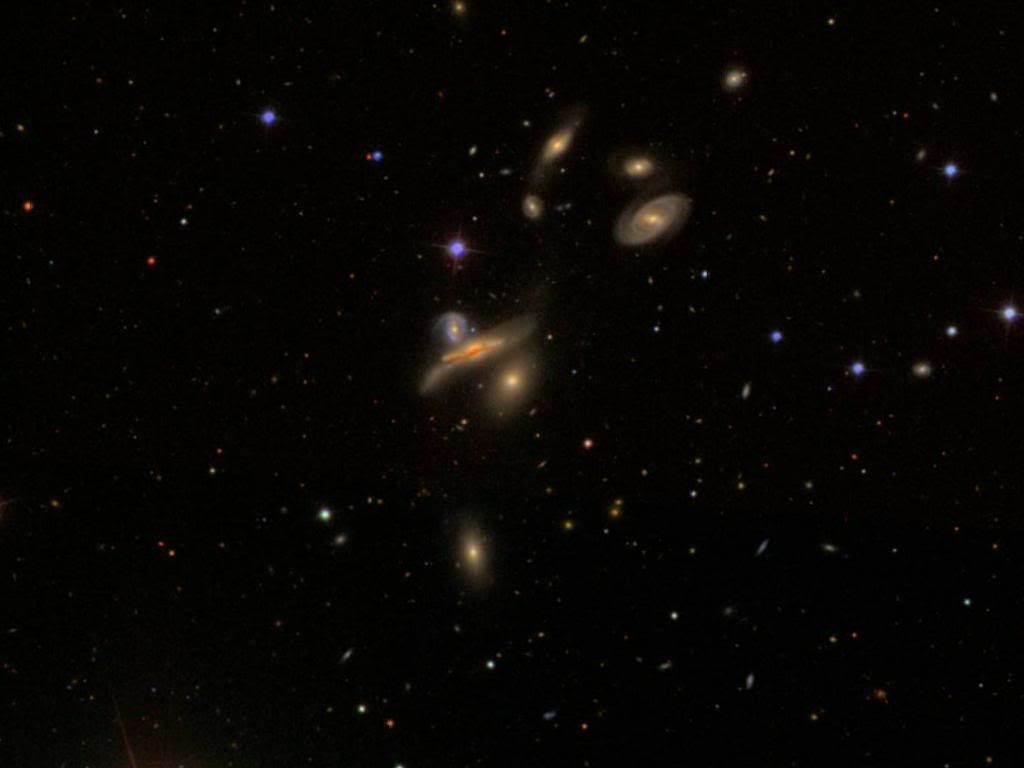Stephan's Quintet. Photo:
NASA, ESA, and the Hubble SM4 ERO Team
Conventionally, astronomical images are shown north up and east to the left. Compared with that convention, today's APOD has been rotated. The image at left shows the correct orientation.
According to
Wikipedia, the following filters have been used to make the image at left: 8-micrometre infrared light = red, H-alpha = green, visible red light = blue. That means that all the filters used for the image detect either red or infrared light, which might explain why the blue tidal tails of NGC 7318 seem muted.
I have to wonder if Jose Jimenez Priego has used the same "filter images" to create his APOD. The color balances of the two images are very different, which might be explained by the difficulty of using an "all-red" set of images to create a three-color image.
What both images seem to show us is that NGC 7318 consists of two bright, egg-shaped to amorphous yellow blobs mashing together and machine-gun-firing bluish shards of starforming debris in a few preferred directions. Both images seem to emphasize the hulking mass of the old yellow and red stars and the wispiness of the blue firecrackers.
Seyfert's Sextet. Photo: NASA, J. English (U. Manitoba), S. Hunsberger,
S. G. Zonak, J. Charlton, and S. C. Gallagher (PSU)
Copeland's Septet. Photo: SDSS.
It is in fact true that most compact groups of galaxies are dominated by old red stars. At left you can see another Seyfert's group, Seyfert's Sextet. The obvious spiral in the picture is a background object. The elongated blue galaxy may belong to the group, but if so, it must be a recent addition. The other galaxies in the group have been harassing each other for (possibly) billions of years, and they have used up, heated up or expelled basically all their star making material by now. At right is a picture of another compact group of yellow galaxies, Copeland's Septet.
Seyfert's Quintet is probably unusual in that it still contains as much star formation as it does. Even so, we should expect any compact group to have converted quite a lot of its "free gas" into (mostly old) stars.
It is clear that a "recent collision" like the Antennea galaxies contains a lot more blue stars and a lot less old red stars that typical galaxies of compact groups. Here you can see the Antennae galaxies in just
blue and yellow, here they are in
blue, yellow and Ha, here you can see a probable
RGBHa image that shows huge tidal shells of old stars, and here, finally, is a comparison between
the optical and the infrared appearance of the Antennae. No matter how you look at them, the brilliance of star formation dominates the Antennae.
Stephan's Quintet is not like that, but it is still quite unusual as compact groups of galaxies go in its continuing bright and widespread star formation.
Ann
 Colliding Galaxies in Stephan's Quintet
Colliding Galaxies in Stephan's Quintet



